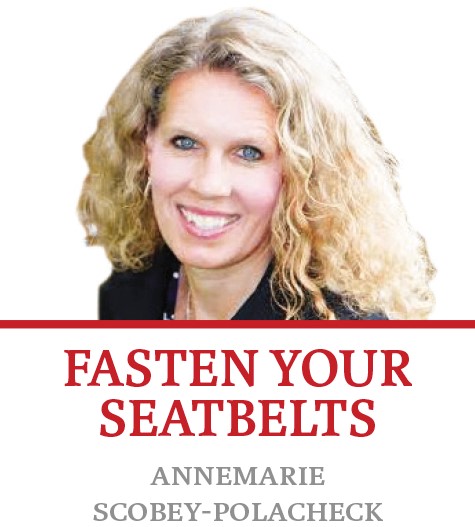Fasten Your Seatbelts
Before the pandemic, I didn’t pay much attention to the steps recorded by my Apple Watch. I had a 25- year habit of running several miles four days a week to stay reasonably fit and sane, and on my running days, exceeding the 10,000-step health goal was an easy reach. If I skipped a day running, the daily tasks of walking around at work, running errands, and shepherding kids still landed me around 7,000 steps. In March, though, when my company sent us home to work, when my children’s school went online, and when the best way I could be helpful in a global health crisis was to stay put at home with my family, my daily step count on non-running days dropped to under 1,000. Maybe 2,000 if it was laundry day.
Of all the tragedies brought on by the pandemic — the illness, death, job loss, educational setbacks, hunger, mental illness and national division — my personal struggle with step-counting does not even register. The pandemic has brought our family disappointment and inconvenience, rather than the terror and grief felt by so many in our community. Yet, for me, the number on my wrist has become a metaphor for connection with others and how fragile that connection can be.
As the initial weeks of the stay-at-home order turned into months and COVID-19 cases grew exponentially, I found ways to bump up my daily step count so as to not turn into a slug — adding daily walks and bike rides on non-running days — artificially driving my step count without moving toward anyone or anything, just moving. My Apple Watch was undeterred in enthusiasm, congratulating me for “closing the ring” and letting me know I reached my goal. But as I stepped outside into the silence of another few miles of steps, I thought of all the people I used to step toward on a daily basis — those friends and family I couldn’t see anymore, but also the people I couldn’t quite count as friends; people, who lived on the edges of my life and who added to it quietly, yet consistently.
I thought of Rhonda, a cafeteria employee at my workplace whose job seemed to be half salad bar management and half general corporate cheerleader. Rhonda turned every Thursday into a special event. “Hi, Miss Anna! How are you today? It’s Friday Eve!” Rhonda, in her early 60s, died early in the pandemic of a heart attack at home. I don’t know what I said to her on the last day I saw her; it certainly was not goodbye, since we could never have guessed in March that a multinational corporate headquarters could possibly move to a work-at-home environment for a year. I never said goodbye. I hope I thanked her for the salad and wished her a good Friday Eve back.
My world became quiet. My daughters’ spring soccer season vanished, and with it, the sideline conversations with the other parents. Graduations went virtual, and the thousands of steps I did not take on the campus of my son’s university meant I never met the parents of his friends. My own friends began to lose parents at alarming rates and the steps I would have taken at the wakes and funerals to hug my friends were replaced by motionless moments on my couch re-reading obituaries, or in front of my computer screen watching a livestreamed funeral.
I missed my parents. In the summer, they hovered appropriately apart from us in the backyard for occasional barbecues. I took to biking to their house to visit them, masked and outside, talking about our hopes for the racial justice movement and the timing of the coming vaccine. In those visits, I tried to make up for the steps we would have taken together at family celebrations, cooking, doing dishes, talking. The cold of November and December chilled our visits, made them more difficult, infrequent, forced. January brought even fewer steps with my parents.
The pandemic rages on, but I feel the promise of the coming vaccinations in many of my steps, now. I am tentatively imagining a summer where my vaccinated parents and father-in-law could sit at the same table as their grandchildren. I am imagining watching the news and seeing charts showing death rates subsiding and schools re-opening. I am imagining our world emerging from this tragedy and beginning to heal.
I don’t know when I will personally receive the vaccine. I’m not a health care worker; I have no underlying health condition; I should be in one of the last groups. By the time I receive the vaccine, I imagine that we will be moving toward herd immunity. But I’ll be wearing my Apple Watch that day, and it will count my steps as I walk toward my vaccination.
And as we, as a world, journey together away from the virus, I will take with me a deeper understanding of the intentionality that can come with where we choose to walk, and with whom. I will take less for granted those on the edges of my life; I will better appreciate the rhythm of my extended family and the celebration of milestones. As we, as a world, journey together away from this virus, I know that this particular obstacle will be replaced with others — that pain, suffering and loss are part of the human condition. And I pray that the steps I am allowed to take in the future will always be toward others; toward connection; toward community.

